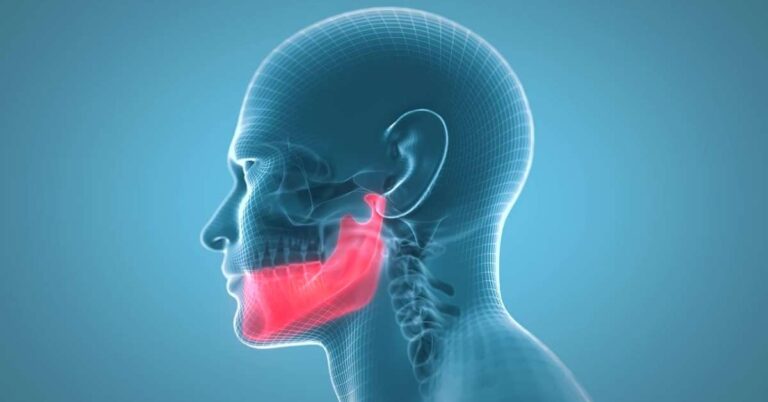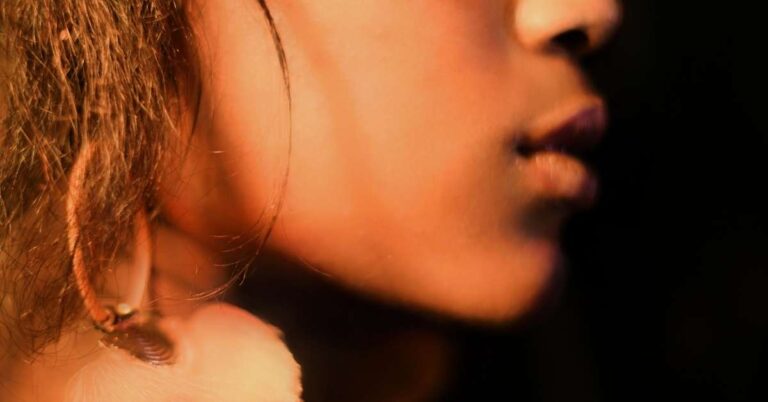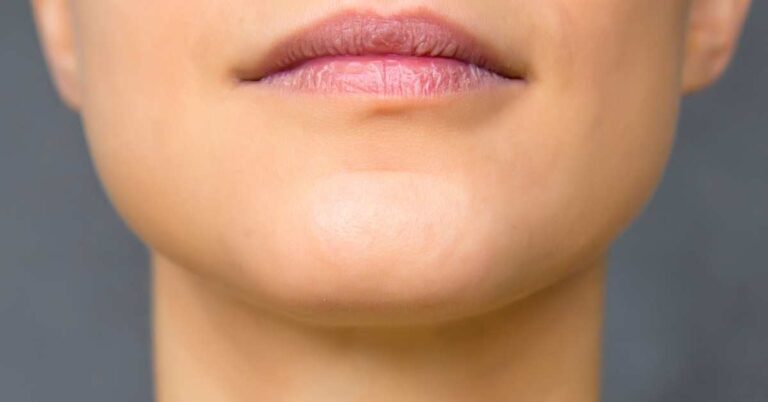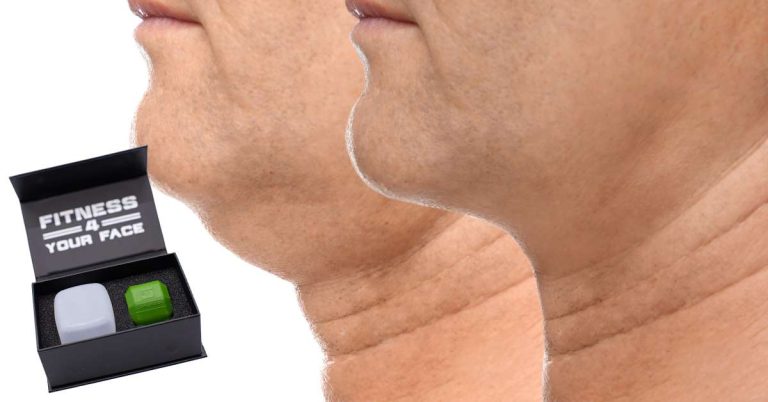Mewing And Chewing Gum: How It Works, What You Need To Know
Mewing and chewing gum: name a more iconic duo. Seriously, if you’re taking mewing seriously at all, then you’ve probably read about mastic gum and tongue chewing, as well as lots of other tricks of the trade. But whether you’re new to mewing, a mewing pro, or just looking to improve the appearance of your jawline, you’ve come to the right place.
Most mewing advocates (including Dr. Mew) consider chewing hard gum to be critical for strengthening and defining the jaw. Dr. Mew also recommends something he calls ‘tongue chewing,’ where you essentially use your tongue instead of your teeth to manipulate the gum in your mouth. In short, mewing and chewing gum go hand-in-hand.
You probably can’t remember the first time you started chewing bubble gum as a little kid. But if you’re ready to take your gum chewing to an adult, jaw-defining new level, here’s what you need to know.
Note: As with anything related to working your muscles, it is possible to overdo it with chewing gum. I’ll cover what to look out for below.

Mewing and Chewing Gum: Mutually Exclusive?
Before we get into how chewing gum can support mewing, let’s get one of the basics out of the way. Namely, many people wonder if you can mew and chew gum at the same time. Does doing one mean you can’t do the other?
They say you can’t walk and chew gum at the same time (ha!), and the same goes for mewing and chewing gum. Think about it. When you mew, your tongue should be pressing up against the roof of your mouth. But when you chew, the tongue should be helping to manipulate food.
Plus, I find if you think about your tongue too much while chewing, you’re likely to bite your tongue. Not the end of the world—but not necessary, either.
So mew as much as you can throughout the day (see how many hours a day you should mew here). And then when you’re chewing gum, try to enjoy it and get the most out of it without worrying about tongue placement too much.
That said, I would also encourage you to keep one mewing principle in mind while you do chew gum (or anything else). Namely, keep your lips sealed and breathe through your nose while you’re chewing gum.
Yes, there are benefits to chewing gum. But you’ll erase a lot of those benefits if you use it as an excuse to take up mouth breathing again.
Chewing Gum: Best Practices for Jaw Strengthening
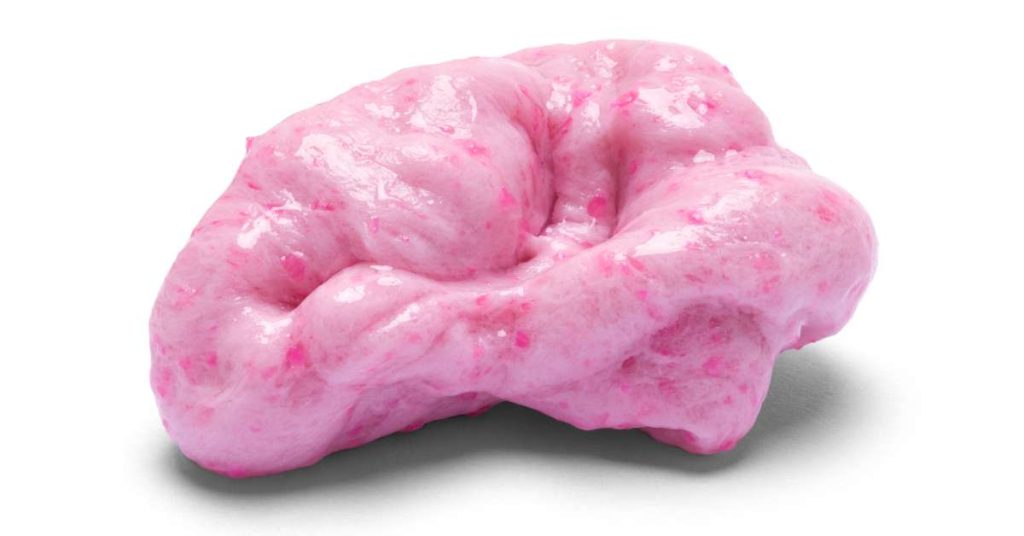
Of course, people who start mewing often do so because they want to restructure their whole midface.
In fact, Dr. Mew says developing strong muscle from hard chewing will support the midface and have a significant impact on how you look.
“Facial appearance is not as set in stone as we sometimes like to feel that it is,” says Dr. Mew. “You can change it, and you can change it for the positive, but it is hard work and it takes a long time.”
So what is hard chewing? It’s just what it sounds like—chewing things that are hard.
Hard chewing can refer to eating foods that are physically difficult to grind down, like raw carrots and other vegetables, apples, cooked meats and jerky, and crusty bread.
OR, it can mean chewing hard gum. And yes — there is such a thing as ‘hard gum.’ If you’re used to grabbing your gum from the check-out line, wait until you discover the world of mastic gum (your jaw will thank you if you use it properly).
Risks with Chewing Gum
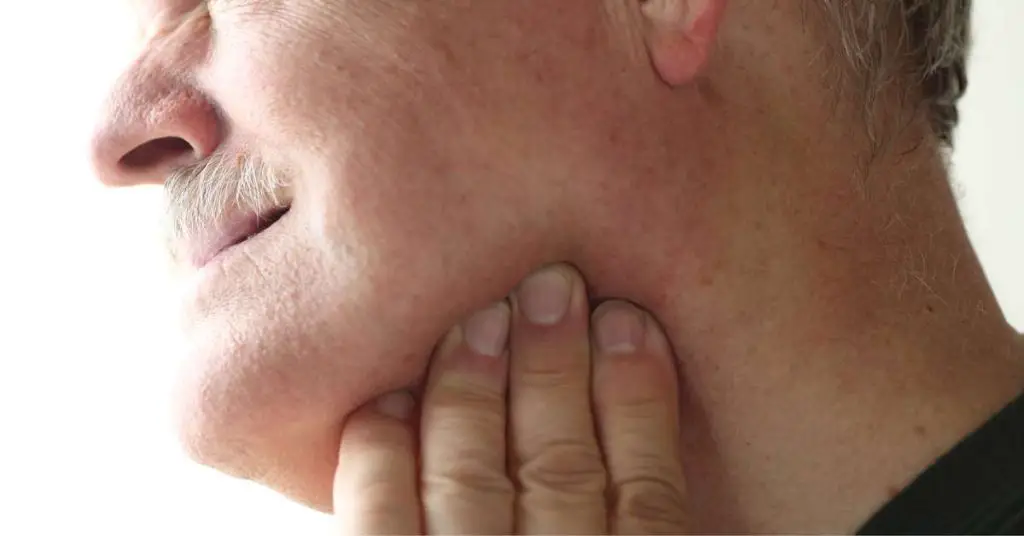
Chewing sugar-free gum can be a great part of a mewing practice and an overall healthy lifestyle. But, as with anything else in life, it’s possible to over do it, which can have some risks.
Specifically, you may experience jaw joint problems if you chew too much or for too long, especially if you overdo chewing anything hard like mastic gum. And you should only jump into hard chewing if you have a pretty solid foundation in mewing and can already keep your tongue on the roof of your mouth most of the time.
In fact, Dr. Mew strongly warns against doing lots of chewing if you have any amount of subacute jaw joint problems. You don’t want to exacerbate these problems, he says, because “it can be very, very difficult to get out of them — it’s a real hole you can get into.”
If you’re not sure if you have preexisting jaw problems, then Dr. Mew outlines three ways to self-diagnose in this video.
If you already have TMJ or other jaw joint problems, then I probably don’t need to tell you to avoid hard chewing. Just stick to mewing correctly, maintain good overall health and posture, and work on nose breathing. You can also try ‘tongue chewing,’ which we’ll explore more below.
Finally, when you first start chewing gum seriously (or doing any other kinds of jaw exercises), it’s normal for your muscles to ache a little bit. But obviously, you should never feel acute pain.
And remember that you’re in this for the long haul, so there’s no rush. Don’t go out and order 5 packs of mastic gum and chew them all in a day. It’s always best to start slowly, build up your muscles, see how your body reacts, and go from there.
And there’s no shame in sticking to regular gum, at least at first!
Hint: maintaining good posture and tucking your chin while you chew can help reduce pressure on your jaw joint.
The Best Gum For The Jawline
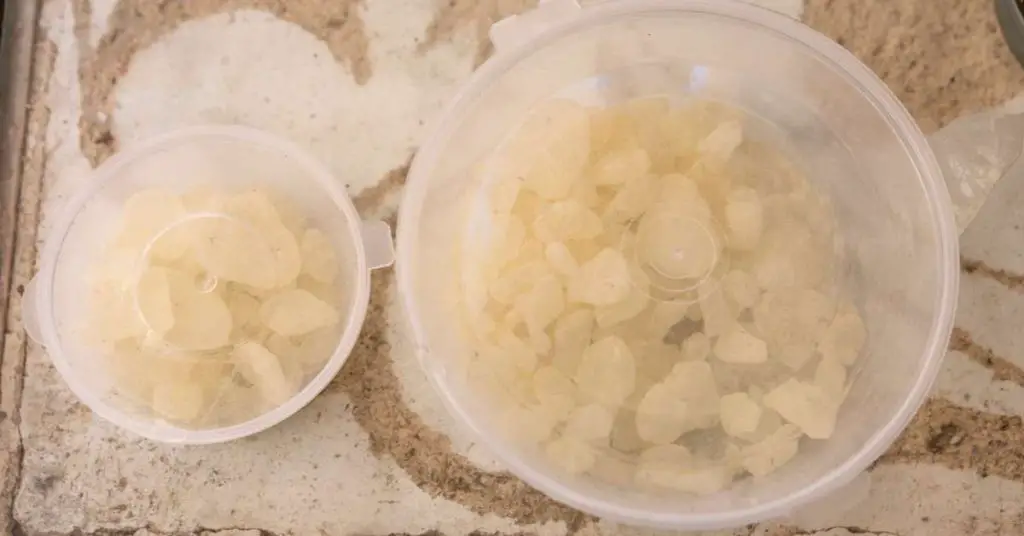
If you are new to the mastic gum train, welcome aboard. This is hard gum that is actually made from resin from trees grown in the Mediterranean. People have used it for centuries, with good reason. Studies show that it can help relieve digestive issues (including abdominal pain and discomfort), ease symptoms of inflammatory bowel disease (IBD), lower cholesterol, promote liver health, help prevent cavities, and more. It’s even been linked to helping prevent certain cancers.
And, critical for our purposes here, mastic gum is way harder to chew than normal gum. So much so that it can take a little getting used to (to reiterate my earlier point: start really slowly!).
For this reason, chewing mastic gum has become quite popular in the mewing community. It’s a great way to supplement your other exercises and add some hard chewing to your day.

Note that some sources I’ve read suggest checking in with your doctor before using mastic gum. And while it can help with symptoms of a lot of conditions, it’s not a supplement for treatment. Side effects might include headaches, upset stomach, or dizziness.
I chew mastic gum without any issues, but you do want to take it slowly, and make sure you’re getting higher quality stuff. Even if you’re not worried about side effects, it can still hurt your jaw if you chew too much, too frequently.
Bottom line: if you want to try mastic gum, pick a good brand, follow any instructions on the label, and start slowly.
An Alternative to Mastic Gum
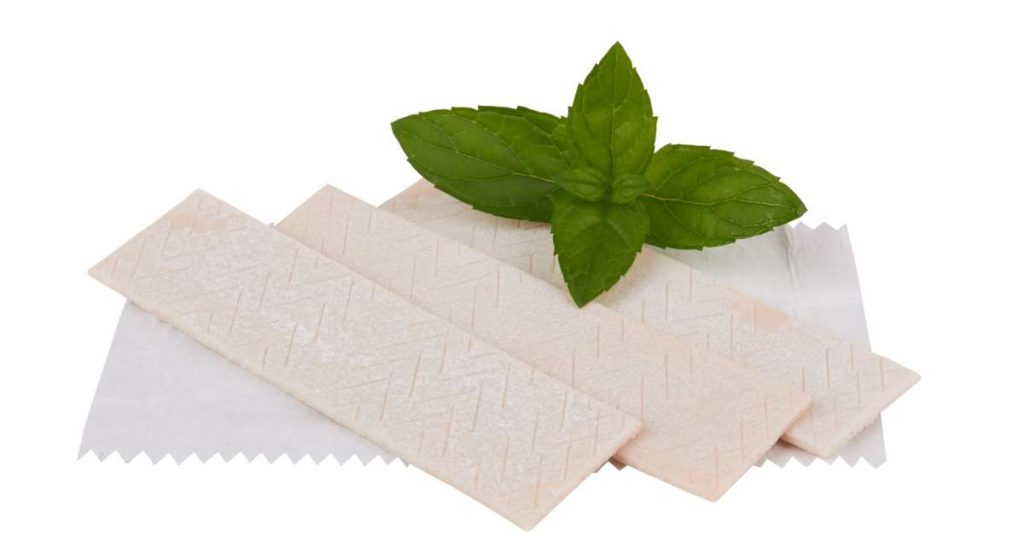
Maybe mastic gum isn’t your thing. Or maybe you love mastic gum, but want to explore even more ways to get in a good chew.
In either case, you might want to explore what Dr. Mew calls ‘big bolus chewing.’ He demonstrates the practice in this video, where he’s chewing 14 pieces of run-of-the-mill gum, like any you can pick up at your local gas station.
In this particular instance, he’s chewing Wrigleys spearmint gum, which he says he likes because it lasts a long time and doesn’t tend to stick to orthodontic appliances. But overall, he’s agnostic about what gum to chew. What matters is that you chew a lot of gum at once, i.e.: that you create a big ‘bolus’ (or wad) of gum in your mouth.
According to Dr. Mew, you should form this big bolus/wad of gum into a tight ball. Then, with your lips gently sealed, you use your tongue to push this ball around your mouth. This is a whole mouth exercise that he says mirrors myofunctional therapy.
Specifically, like he demonstrates in this video, the idea is to start with the ball on one side of your mouth, way back by your back incisors. Then, continuously rolling it with your tongue, you can push the ball to the front of your mouth, under the tips of your incisors. Then keep going to the other side of your mouth, all while continuously yet gently rolling with your tongue. And make sure it’s your tongue that’s actually moving the ball around.
This activity can be beneficial because, according to mewing principles, it’s both the muscle effect AND the tongue effect that influence facial form. Both need to be in balance. So it’s great to work your jaw, assuming you’re doing it properly. But if you’re not also exercising your tongue, then that could lead to imbalances (which in turn can lead to jaw joint problems and the like).
So big bolus chewing allows you to engage your whole mouth, including (and especially) your tongue.
Like with other aspects of mewing, this is hard work. Especially at first, you might find it challenging. Be careful not to swallow (duh), and you might even find it makes you a bit nauseous if you let the gum slide too far back in your throat. And like everything else, don’t over do it. But otherwise, this might be a good way to compliment your other mewing efforts.
Other Jaw Exercisers
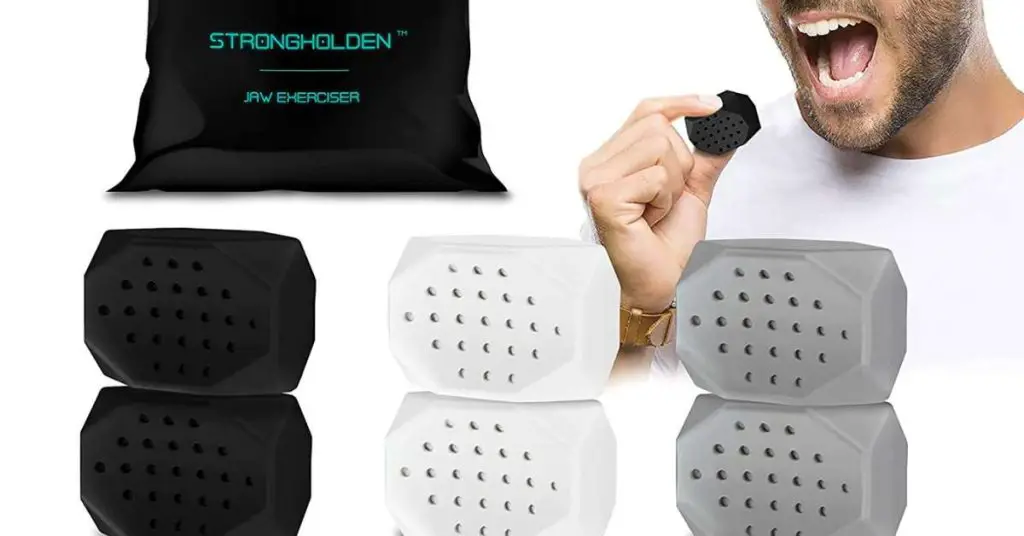
As you probably guessed, I’m a mewing proponent. I think mewing, gum chewing, and nasal breathing are really all you need to keep your lower face tight and attractive (not to mention all the health benefits)
But if you’re looking to strengthen your jawline and/or get rid of a double chin, then you may be interested in other exercises and avenues you can take. I explore them all here:
How To Fix Your Jawline: Double Chin Exercisers, Mewing, Botox, and More
Tongue Chewing: What You Need To Know
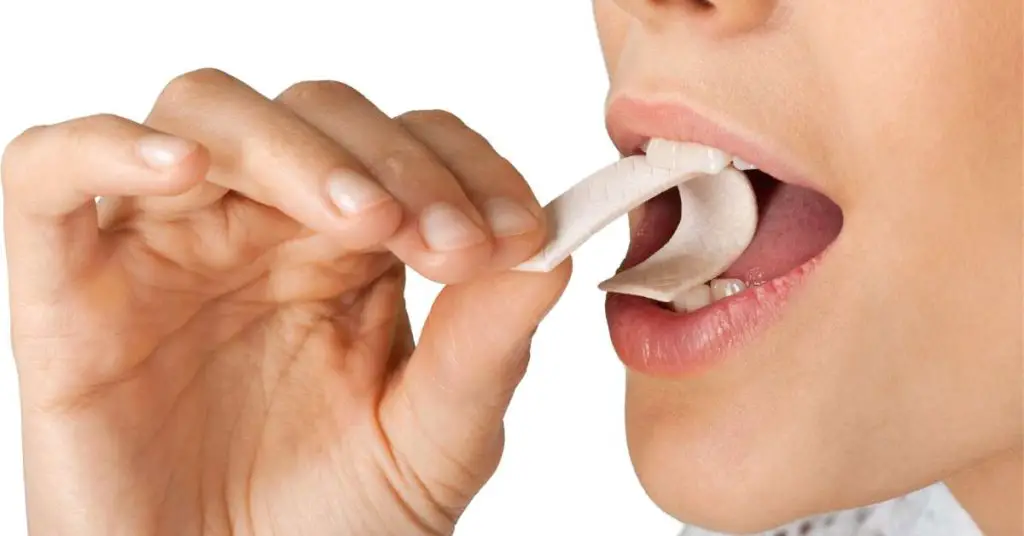
Ah, tongue chewing. It’s exactly the type of thing that makes mewing seem so weird to outsiders—while at the same time being so simple and helpful that once you start, you’re not going to want to stop.
First things first. Obviously, I’m not talking about actually chewing on your tongue, which is a serious problem that you should absolutely avoid (again, duh).
What I am talking about is the exercise that Dr. Mew developed to strengthen your tongue muscles.
Like we’ve already discussed, both your muscles and your tongue need to be in balance for both maximum attractiveness and to avoid joint problems. That’s essentially why most of us mew.
I like to think of tongue chewing as ‘Mewing Plus.’ It’s a great way to train your tongue muscles, especially if you’re new to mewing and not quite sure how to do it (related: how to tell if you’re mewing correctly).
So with tongue chewing, you use regular gum again, but this time a normal amount. And after you’ve softened it up, you’re going to manipulate it with your tongue instead of your teeth (hence, ‘tongue’ chewing).
To do that, you use your tongue to push your gum on the roof of your mouth. Start with a ball of gum, and use your tongue to press it out as thin and flat as you can against your palate, using as much of the back of your tongue as you can.
Avoid doing this directly behind your front teeth. The goal is to see how far back you can start, noting that the goal with mewing is to engage the back third of your tongue.
The great thing about tongue chewing is that you’re not using your jaw joint, like you do with regular gum chewing. And when you tongue chew, you’re essentially mewing, with an aid to help guide you in the process. That’s why it’s great for newbies, and great for experienced mewers, too.
Related Posts:
- How To Fix Your Jawline: Double Chin Exercisers, Mewing, Botox, and More
- Are Mewing Results Permanent? Yes, But Only If You Do This
- How To Tell If You’re Mewing Correctly: Signs To Look Out For
- Can Mewing Fix A Receding Chin?
Related Questions:
You can’t expressly chew gum while you are mewing. That said, you can still follow other aspects of mewing principles, like keeping your lips gently sealed and swallowing properly. Chewing hard gum can also supplement a mewing practice if you do it correctly.
Is Mewing and Chewing Gum Better?
Many people like to combine their mewing practice with chewing gum, to help boost their jaw muscle gains. That said, chewing too frequently or chewing gum that is too hard may exacerbate jaw joint problems in some people. These people should stick to carefully mewing, and perhaps consider a practice that Dr. Mew calls ‘tongue chewing.’
Is Chewing Gum Good For The Jawline?
Chewing gum can be very good to keep your jawline muscles active, and therefore healthy and attractive. That said, it is possible to chew too much, which can exacerbate or create jaw joint problems. People looking to chew gum to strengthen their jawline should start slowly and carefully.
Does Chewing Gum Help Build Jaw Muscles?
Chewing gum can help build jaw muscles, especially if you chew hard gum like mastic gum. In fact, chewing too much gum can be damaging to your jaw muscles and joints.

